Related Research Articles

Rendering or image synthesis is the process of generating a photorealistic or non-photorealistic image from a 2D or 3D model by means of a computer program. The resulting image is referred to as the render. Multiple models can be defined in a scene file containing objects in a strictly defined language or data structure. The scene file contains geometry, viewpoint, texture, lighting, and shading information describing the virtual scene. The data contained in the scene file is then passed to a rendering program to be processed and output to a digital image or raster graphics image file. The term "rendering" is analogous to the concept of an artist's impression of a scene. The term "rendering" is also used to describe the process of calculating effects in a video editing program to produce the final video output.

In computer science, binary space partitioning (BSP) is a method for space partitioning which recursively subdivides a Euclidean space into two convex sets by using hyperplanes as partitions. This process of subdividing gives rise to a representation of objects within the space in the form of a tree data structure known as a BSP tree.

Image registration is the process of transforming different sets of data into one coordinate system. Data may be multiple photographs, data from different sensors, times, depths, or viewpoints. It is used in computer vision, medical imaging, military automatic target recognition, and compiling and analyzing images and data from satellites. Registration is necessary in order to be able to compare or integrate the data obtained from these different measurements.
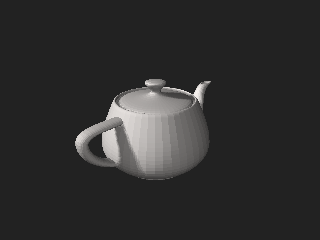
The Utah teapot, or the Newell teapot, is a 3D test model that has become a standard reference object and an in-joke within the computer graphics community. It is a mathematical model of an ordinary Melitta-brand teapot that appears solid with a nearly rotationally symmetrical body. Using a teapot model is considered the 3D equivalent of a "Hello, World!" program, a way to create an easy 3D scene with a somewhat complex model acting as the basic geometry for a scene with a light setup. Some programming libraries, such as the OpenGL Utility Toolkit, even have functions dedicated to drawing teapots.

Ray casting is the methodological basis for 3D CAD/CAM solid modeling and image rendering. It is essentially the same as ray tracing for computer graphics where virtual light rays are "cast" or "traced" on their path from the focal point of a camera through each pixel in the camera sensor to determine what is visible along the ray in the 3D scene. The term "Ray Casting" was introduced by Scott Roth while at the General Motors Research Labs from 1978–1980. His paper, "Ray Casting for Modeling Solids", describes modeled solid objects by combining primitive solids, such as blocks and cylinders, using the set operators union (+), intersection (&), and difference (-). The general idea of using these binary operators for solid modeling is largely due to Voelcker and Requicha's geometric modelling group at the University of Rochester. See solid modeling for a broad overview of solid modeling methods. This figure on the right shows a U-Joint modeled from cylinders and blocks in a binary tree using Roth's ray casting system in 1979.
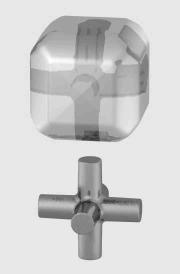
Solid modeling is a consistent set of principles for mathematical and computer modeling of three-dimensional shapes (solids). Solid modeling is distinguished within the broader related areas of geometric modeling and computer graphics, such as 3D modeling, by its emphasis on physical fidelity. Together, the principles of geometric and solid modeling form the foundation of 3D-computer-aided design and in general support the creation, exchange, visualization, animation, interrogation, and annotation of digital models of physical objects.

In scientific visualization and computer graphics, volume rendering is a set of techniques used to display a 2D projection of a 3D discretely sampled data set, typically a 3D scalar field.

The Stanford bunny is a computer graphics 3D test model developed by Greg Turk and Marc Levoy in 1994 at Stanford University. The model consists of 69,451 triangles, with the data determined by 3D scanning a ceramic figurine of a rabbit. This figurine and others were scanned to test methods of range scanning physical objects.
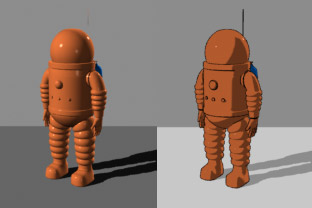
Non-photorealistic rendering (NPR) is an area of computer graphics that focuses on enabling a wide variety of expressive styles for digital art, in contrast to traditional computer graphics, which focuses on photorealism. NPR is inspired by other artistic modes such as painting, drawing, technical illustration, and animated cartoons. NPR has appeared in movies and video games in the form of cel-shaded animation as well as in scientific visualization, architectural illustration and experimental animation.
Computer graphics lighting is the collection of techniques used to simulate light in computer graphics scenes. While lighting techniques offer flexibility in the level of detail and functionality available, they also operate at different levels of computational demand and complexity. Graphics artists can choose from a variety of light sources, models, shading techniques, and effects to suit the needs of each application.

Fluid animation refers to computer graphics techniques for generating realistic animations of fluids such as water and smoke. Fluid animations are typically focused on emulating the qualitative visual behavior of a fluid, with less emphasis placed on rigorously correct physical results, although they often still rely on approximate solutions to the Euler equations or Navier–Stokes equations that govern real fluid physics. Fluid animation can be performed with different levels of complexity, ranging from time-consuming, high-quality animations for films, or visual effects, to simple and fast animations for real-time animations like computer games.
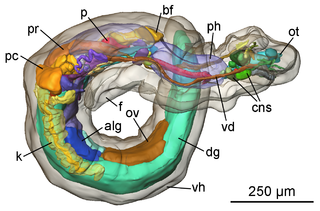
In computer vision and computer graphics, 3D reconstruction is the process of capturing the shape and appearance of real objects. This process can be accomplished either by active or passive methods. If the model is allowed to change its shape in time, this is referred to as non-rigid or spatio-temporal reconstruction.
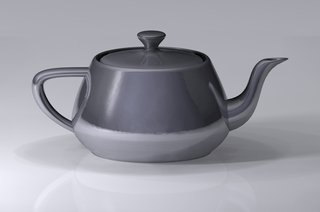
Computer graphics is a sub-field of computer science which studies methods for digitally synthesizing and manipulating visual content. Although the term often refers to the study of three-dimensional computer graphics, it also encompasses two-dimensional graphics and image processing.

Andrew Paul Witkin was an American computer scientist who made major contributions in computer vision and computer graphics.
Pose space deformation is a computer animation technique which is used to deform a mesh on skeleton-driven animation. Common use of this technique is to deform the shape of a mesh according to the angle of the joint bent. Although the name is commonly called Pose space deformation on many scholarly articles, 3D animation software rarely uses that name. On Autodesk Maya, it's implemented under the name Pose Deformer, and on Blender, it's implemented as Corrective Shape Keys. The first famous application of this technique was the cloth's movement on the first episode of the animated film The Animatrix.
Spectral shape analysis relies on the spectrum of the Laplace–Beltrami operator to compare and analyze geometric shapes. Since the spectrum of the Laplace–Beltrami operator is invariant under isometries, it is well suited for the analysis or retrieval of non-rigid shapes, i.e. bendable objects such as humans, animals, plants, etc.
Physically based animation is an area of interest within computer graphics concerned with the simulation of physically plausible behaviors at interactive rates. Advances in physically based animation are often motivated by the need to include complex, physically inspired behaviors in video games, interactive simulations, and movies. Although off-line simulation methods exist to solve most all of the problems studied in physically-based animation, these methods are intended for applications that necessitate physical accuracy and slow, detailed computations. In contrast to methods common in offline simulation, techniques in physically based animation are concerned with physical plausibility, numerical stability, and visual appeal over physical accuracy. Physically based animation is often limited to loose approximations of physical behaviors because of the strict time constraints imposed by interactive applications. The target frame rate for interactive applications such as games and simulations is often 25-60 hertz, with only a small fraction of the time allotted to an individual frame remaining for physical simulation. Simplified models of physical behaviors are generally preferred if they are more efficient, easier to accelerate, or satisfy desirable mathematical properties. Fine details are not important when the overriding goal of a visualization is aesthetic appeal or the maintenance of player immersion since these details are often difficult for humans to notice or are otherwise impossible to distinguish at human scales.
Thomas W. Sederberg is the associate dean of the college of physical and mathematical sciences and professor of Computer Science at Brigham Young University in Provo, Utah. His research involves computer graphics and computer aided design. He helped invent free-form deformation and T-splines.
Michael F. Cohen is an American computer scientist and researcher in computer graphics. He was a senior research scientist at Microsoft Research for 21 years until he joined Facebook Research in 2015. In 1998, he received the ACM SIGGRAPH CG Achievement Award for his work in developing radiosity methods for realistic image synthesis. He was elected a Fellow of the Association for Computing Machinery in 2007 for his "contributions to computer graphics and computer vision." In 2019, he received the ACM SIGGRAPH Steven A. Coons Award for Outstanding Creative Contributions to Computer Graphics for “his groundbreaking work in numerous areas of research—radiosity, motion simulation & editing, light field rendering, matting & compositing, and computational photography”.
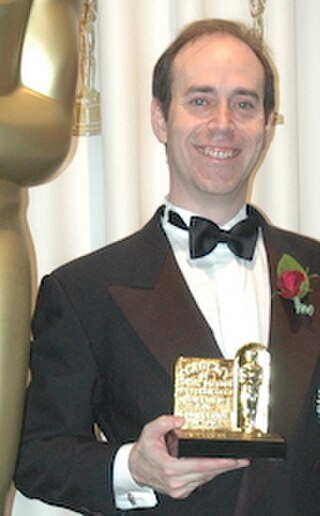
Michael Kass is an American computer scientist best known for his work in computer graphics and computer vision. He has won an Academy Award and the SIGGRAPH Computer Graphics Achievement Award and is an ACM Fellow.
References
- ↑ Sederberg, Thomas W.; Parry, Scott R. (1986). "Free-form deformation of solid geometric models". ACM SIGGRAPH Computer Graphics. Vol. 20. pp. 151–160. CiteSeerX 10.1.1.396.2148 . doi:10.1145/15886.15903.
- ↑ Barr, A. H. (July 1984). "Global and local deformations of solid primitives". Proceedings of the 11th annual conference on Computer graphics and interactive techniques. Vol. 18. pp. 21–30. doi:10.1145/800031.808573. ISBN 978-0897911382. S2CID 16162806.
- ↑ Coquillart, S. (September 1990). "Extended free-form deformation: A sculpturing tool for 3D geometric modeling" (PDF). ACM SIGGRAPH Computer Graphics. Vol. 24. pp. 187–196. doi:10.1145/97880.97900.
- ↑ Nonrigid Registration Using Free-Form Deformations: Application to Breast MR Images archived: "Nonrigid Registration using Free-Form Deformations: Application to Breast MR Images".